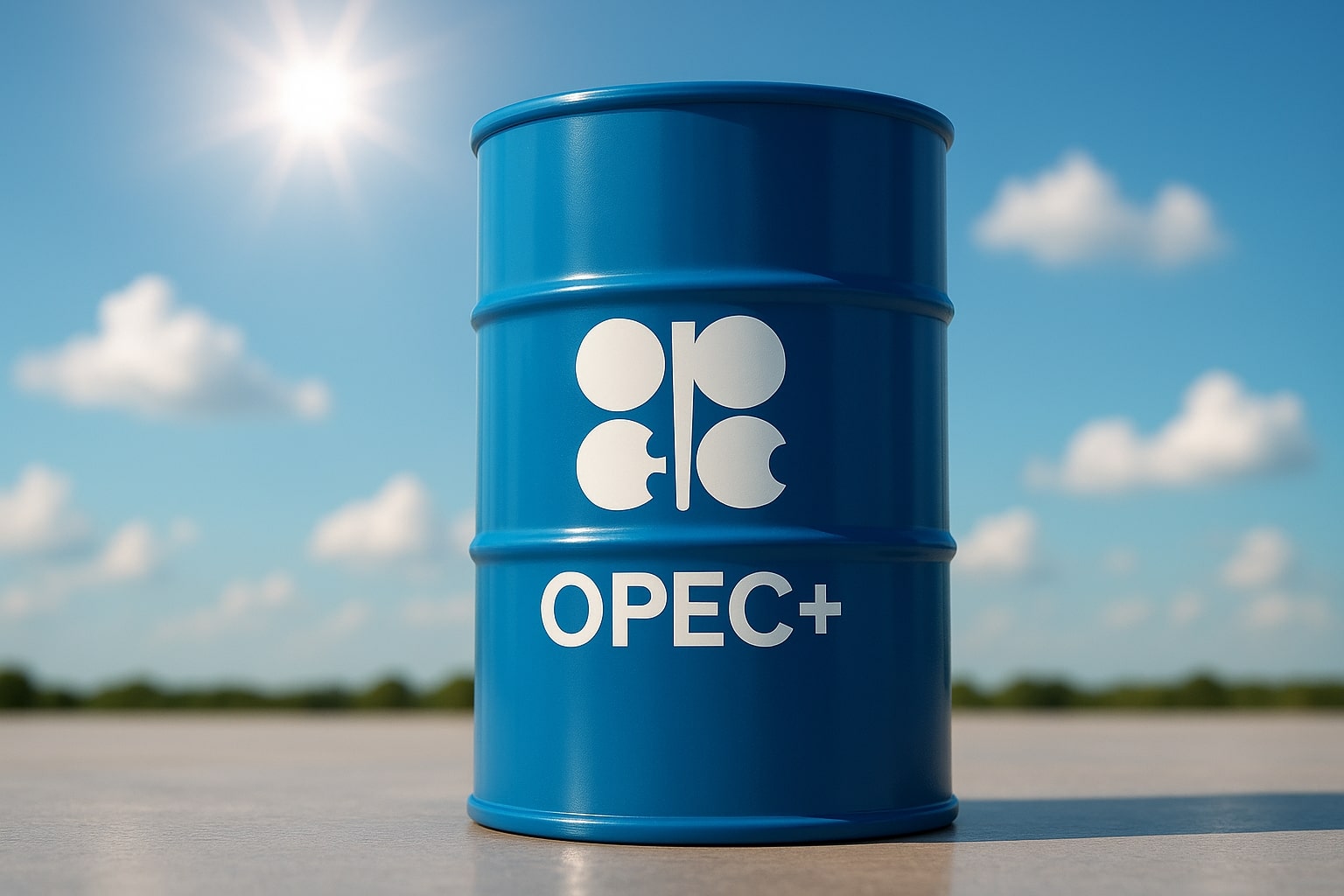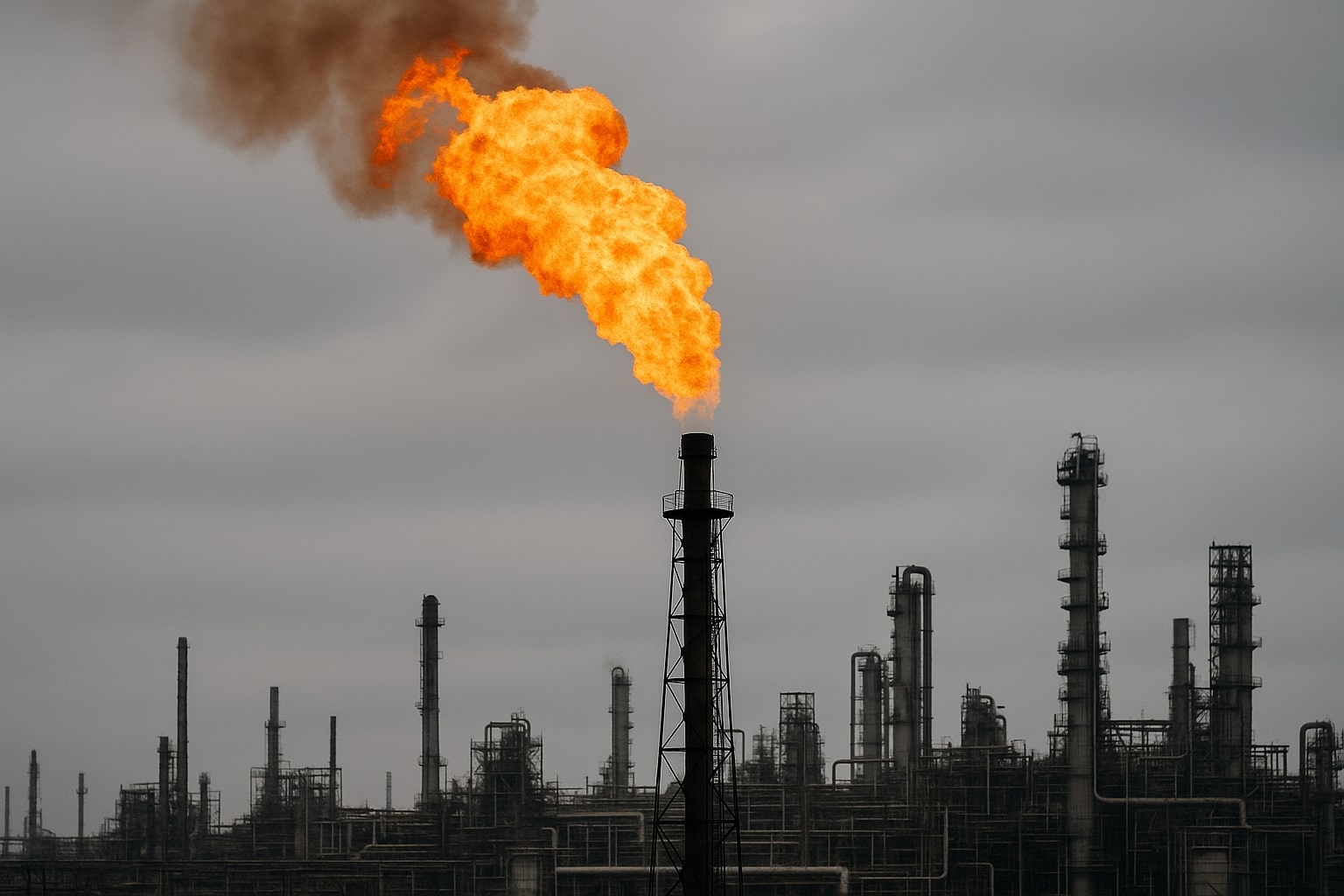
Oil Price Forecast – WTI at $64.61 and Brent at $68.15 Face Oversupply Risks
OPEC+ output, India’s Russian barrels, and U.S. shale breakevens shape WTI (CL=F) and Brent (BZ=F) outlook | That's TradingNEWS
WTI Crude Oil (CL=F) and Brent (BZ=F) Test Key Technical Levels
Oil markets began the week with WTI crude climbing 0.94% to $64.61 per barrel and Brent crude advancing 0.99% to $68.15. The rally coincides with thin U.S. holiday trading volumes but sits directly on the 50-day moving averages, a technical battleground where bulls and bears are both positioned aggressively. For WTI, $65 is the immediate pivot. A sustained move above opens the path toward $67, while repeated failures leave the market locked in the noisy consolidation that has defined the past two weeks. Brent shows a similar setup, with $67 serving as initial support and $70 the psychological target just beneath its 200-day moving average. Both benchmarks are range-bound, offering short-term trading windows rather than long-lasting trends, yet the balance may shift quickly as fundamental shocks mount.
India’s Strategic Russian Oil Imports Reshape Global Trade
Despite U.S. tariffs escalating to 50% on Indian goods, aimed at punishing New Delhi for its continued Russian crude purchases, India shows no signs of backing down. Data confirms that Russia accounted for 31.4% of Indian oil imports in July, well above Iraq at 17.1% and Saudi Arabia at 16.1%. The value of Russian barrels entering India reached $3.6 billion, versus around $2 billion for Iraqi and Saudi volumes. Indian refiners are still importing more than 1.5 million barrels per day of Russian crude, a scale too large to replace quickly. For Washington, the dilemma is clear: squeezing India risks lifting global oil above $100 and reigniting U.S. inflation, yet stepping back exposes the limits of Western sanctions. China is already absorbing additional Russian barrels, and its ability to undercut sanctions further strengthens BRICS alignment. Oil prices remain hostage to these geopolitical calculations, where barrels are traded as much for political leverage as for supply and demand balance.
Saudi Arabia and Iraq Halt Shipments to Sanctioned Indian Buyer
Fresh tension emerged after Saudi Arabia and Iraq suspended shipments to an Indian refiner targeted by sanctions, underscoring how energy flows are increasingly politicized. While volumes remain modest compared to Russian supply, the move highlights that even Middle Eastern producers are not immune to Western pressure. Markets are weighing whether this suspension is symbolic or the start of a broader realignment. Should Indian refiners lean further on Russia to compensate, Moscow’s influence will strengthen, while Middle Eastern producers may quietly redirect barrels to Europe and China. That shift would alter tanker routes, insurance exposure, and freight costs, feeding volatility into already fragile oil pricing structures.
OPEC+ Production Trends and the Threat of Oversupply
The U.S. Energy Information Administration projects Brent crude to average $58 per barrel in Q4 2025, with WTI near $59.65. The bearish outlook reflects OPEC+ gradually unwinding production cuts and higher output from South America, tipping balances into oversupply. Wall Street banks echo this sentiment, with Goldman Sachs, JPMorgan, and Morgan Stanley collectively forecasting Brent in the low $60s for early 2026. For U.S. shale, the implications are severe. Breakeven levels for new wells hover just above $60, and if WTI dips beneath this threshold, rig counts and frac crews will contract further. Rig activity is already declining, though efficiency gains mask the immediate impact on output. A glut-driven slump below $60 would force the shale patch into another round of capex cuts, deepening the cycle of volatility.
Petronas Struggles Under Weak Pricing and Domestic Output Decline
Malaysia’s Petronas posted a 24% revenue decline and a 19% drop in after-tax profit in H1 2025, weighed down by weaker benchmark oil prices, foreign exchange pressures, and divestments. Production slipped 3.2% year-on-year to 2.403 million boepd, down from 2.482 million boepd. Domestic gas production and international liquid output were both lower. The company announced plans to trim its workforce by 10% to weather what it called “increasingly daunting headwinds.” Petronas expects subdued pricing conditions to persist, citing geopolitical tensions, macroeconomic uncertainties, and OPEC+’s unwinding of cuts. For global traders, these results confirm how weaker benchmarks filter through to national oil companies, forcing structural adjustments. Petronas’ challenges illustrate broader struggles among producers caught between sluggish demand recovery and rising geopolitical risk.
Geopolitical Flashpoints Add to the Risk Premium
Attacks on Russian refineries, drone strikes on South Sudanese flows, and Houthi missile claims against Red Sea tankers all remind investors that geopolitical risks are never far from the surface. Supply disruptions remain sporadic, but each incident reintroduces a risk premium that traders must price in. Europe is simultaneously importing record jet fuel volumes from Asia, underscoring how the supply chain remains fractured. These shifts in refined product flows ripple back into crude benchmarks, complicating demand forecasts. Markets are also watching the East Africa pipeline project and Congo offshore developments, both of which could modestly alter medium-term balances if they achieve scale. But near-term price action is more about political flashpoints than new supply coming online.
Technical Signals Point to Heavy Resistance Overhead
From a chart perspective, both WTI and Brent are wrestling with their 50-day moving averages. For WTI, holding above $65 is crucial, as a break could push quickly to $67 and then $70. Failure here risks another slide toward $62, where prior demand has emerged. Brent’s test at $68.15 sits in a congested band, with upside capped by $70–$71 and downside limited at $66. Momentum oscillators show neutral-to-weak bias, reflecting the indecision. The U.S. Dollar Index, trading around 97.70 after four straight declines, provides temporary support, as a weaker dollar typically boosts oil. But structural oversupply fears remain dominant, with technicals likely to follow fundamentals rather than dictate them.
Final Market Positioning: Buy, Sell, or Hold
With WTI crude (CL=F) at $64.61 and Brent (BZ=F) at $68.15, traders face a market torn between short-term bullish catalysts and looming oversupply. On the bullish side, geopolitical risks, U.S. dollar softness, and India’s defiance on Russian barrels inject strength. On the bearish side, EIA’s projection of Brent at $58 and WTI at $59 in early 2026, coupled with Wall Street consensus in the low $60s, casts a heavy shadow. For now, oil is a hold—attractive for tactical long positions into $67–$70 resistance but dangerous for long-term accumulation given looming supply. The next decisive move will hinge on OPEC+ policy, U.S. shale reaction, and whether geopolitical sparks ignite sustained disruption rather than sporadic risk premiums.
That's TradingNEWS
Read More
-
VOO ETF Hits $630 as Fed Shift and AI Growth Power 2026 Rally Toward $700
07.12.2025 · TradingNEWS ArchiveStocks
-
XRP ETFs XRPI & XRPR Aim for $1B Inflows as XRP Holds $2.02 Support
07.12.2025 · TradingNEWS ArchiveCrypto
-
Natural Gas Price (NG=F) Rallies to $5.29, Freezing Temperatures Spark Bullish Breakout
07.12.2025 · TradingNEWS ArchiveCommodities
-
USD/JPY Price Forecast - Dollar Extends Slide to 154 as BoJ Hawkish Pivot Drive Yen Toward 150
07.12.2025 · TradingNEWS ArchiveForex



















